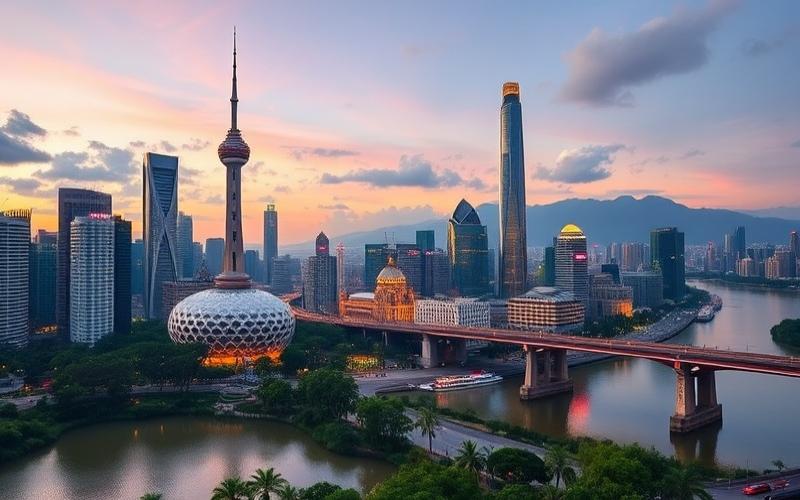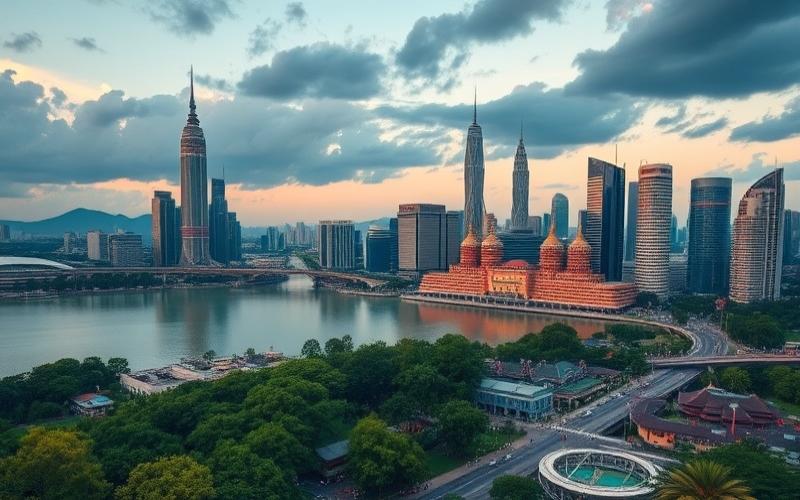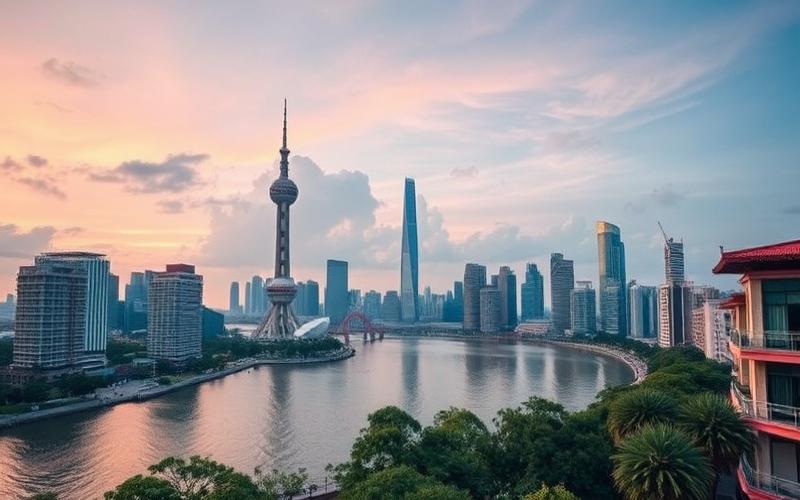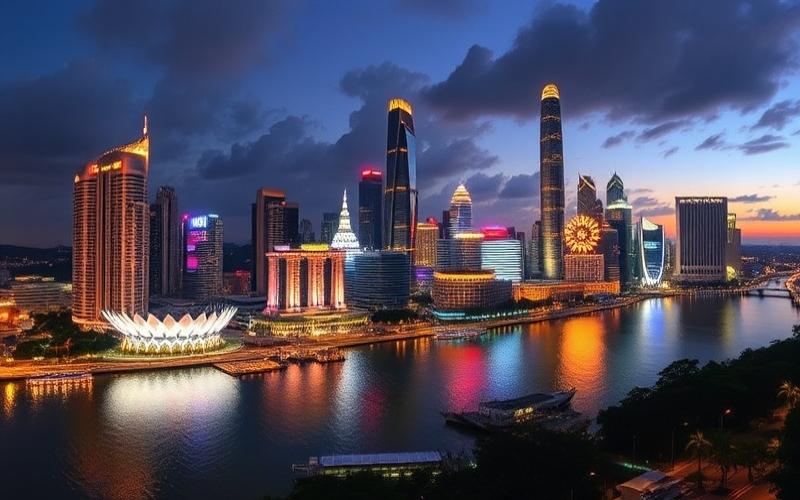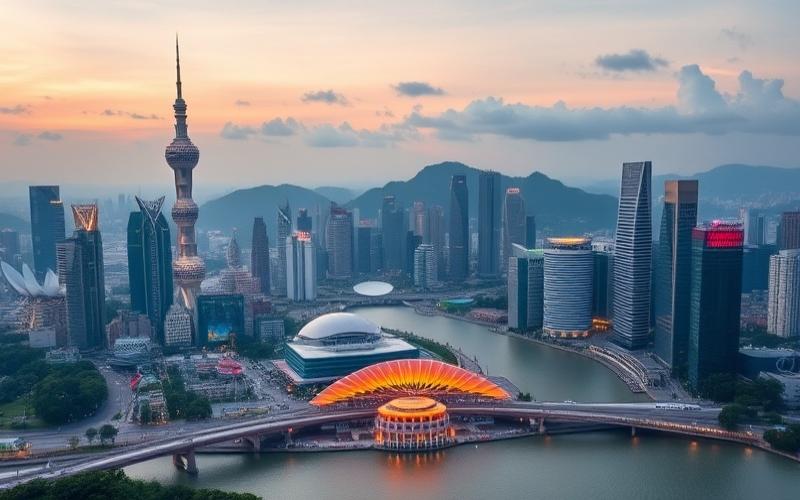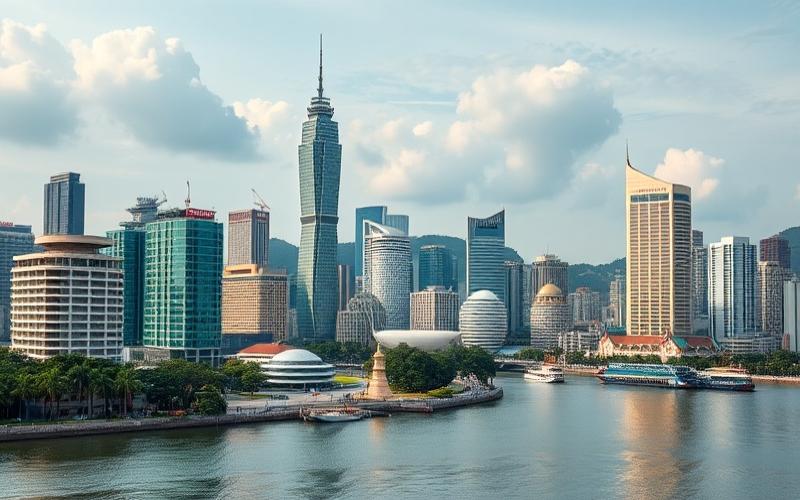
 Published on and written by Cyril Jarnias
Published on and written by Cyril Jarnias
Singapore, a dynamic and modern city-state in Southeast Asia, offers an attractive and competitive real estate market. Renovating a property in this cosmopolitan metropolis can be an excellent way to increase its value and capitalize on opportunities in this thriving market. Whether you own an apartment in a skyscraper in the business district or a colonial house in Emerald Hill, renovation is a wise investment to enhance your property’s value in Singapore.
Why Renovate Your Property in Singapore?
Renovating a property in Singapore offers numerous advantages:
- Increased property value in the highly dynamic local real estate market
- Improved comfort and quality of life
- Optimized space and functionality
- Compliance with energy and environmental standards
- Enhanced appeal for rental or resale
In a competitive real estate market like Singapore’s, a well-planned renovation can make all the difference in standing out and maximizing return on investment.
Key Steps for a Successful Renovation in Singapore
To successfully carry out your renovation project in Singapore, it’s essential to follow a structured process:
1. Project Definition and Objectives
Before starting, take time to clearly define your needs and expectations. Do you want to modernize the interior, expand living space, or improve energy efficiency? Establish a list of priorities and visualize the desired final outcome.
2. Obtaining Necessary Permits
In Singapore, certain renovation works require specific permits. Check with the Urban Redevelopment Authority (URA) and Building and Construction Authority (BCA) to understand the procedures based on your project’s scope.
3. Professional Selection
Hire licensed architects, interior designers, and contractors in Singapore. Check their references and request multiple quotes to compare offers. Don’t hesitate to visit ongoing construction sites to assess their work quality.
4. Detailed Planning
Establish a precise work schedule considering Singapore-specific constraints (permitted work hours, site access, etc.). Include a safety margin to handle unexpected issues.
5. Work Execution
Closely monitor construction progress and ensure compliance with Singapore’s strict building standards, particularly regarding safety and environmental regulations.
6. Quality Control and Finishing
Once major construction is complete, pay attention to finishing quality. It’s often in the details that properties stand out in Singapore’s demanding real estate market.
Good to Know:
In Singapore, it’s common to hire a “project manager” to oversee the entire renovation process and ensure work proceeds smoothly while complying with local standards.
Financing Your Project: Options in Singapore
Financing is a crucial aspect of any renovation project in Singapore. Here are the main options available:
Bank Loans Dedicated to Renovation
Many Singaporean banks offer specific loans for renovation works. These loans typically feature favorable interest rates and flexible repayment terms.
Mortgage Refinancing
If you already have a home loan, refinancing can be an attractive option to free up additional funds for renovation.
Using Your CPF (Central Provident Fund)
In Singapore, it’s possible to use part of your CPF savings to finance renovation works, subject to certain conditions.
Government Grants
The Singaporean government offers various grants to encourage energy-efficient home renovations. Research current programs like the “Green Mark Incentive Scheme for Existing Buildings.”
Personal Savings
Using personal savings remains an option to consider, particularly for small projects or as a supplement to other funding sources.
Good to Know:
In Singapore, it’s recommended to budget an additional 20% to handle unexpected issues and potential cost overruns, which are common in renovation projects.
Materials and Trends: Making the Right Choices in Singapore
Material selection is crucial for the success of your renovation project in Singapore. Here are some trends and recommendations:
Sustainable and Eco-Friendly Materials
Singapore emphasizes sustainable development. Choose environmentally friendly materials like bamboo, FSC-certified wood, or low-VOC paints.
Anti-Humidity Solutions
Singapore’s tropical climate requires using moisture-resistant materials. Prioritize anti-mold coatings and effective ventilation systems.
Minimalist and Functional Design
Clean, multifunctional interiors are highly valued in Singapore. Invest in smart layouts to optimize space.
Integrated Technology
Home automation systems and smart home solutions are increasingly popular in Singapore. Incorporate modern technologies to increase your property’s value and appeal.
Luxury Materials for Finishing
For high-end properties, using premium materials like marble, granite, or precious woods can make all the difference in the Singaporean market.
Good to Know:
In Singapore, it’s important to choose materials certified by the Singapore Green Building Council (SGBC) to ensure their quality and compliance with local standards.
Renovating a property in Singapore is a strategic investment that can significantly increase your property’s value in this dynamic real estate market. By following key steps, carefully planning your budget, and choosing the right materials, you’ll maximize your chances of success. Remember to work with qualified professionals and stay informed about the latest trends and local regulations to successfully complete your renovation project in the City-State.
Disclaimer: The information provided on this website is for informational purposes only and does not constitute financial, legal, or professional advice. We encourage you to consult qualified experts before making any investment, real estate, or expatriation decisions. Although we strive to maintain up-to-date and accurate information, we do not guarantee the completeness, accuracy, or timeliness of the proposed content. As investment and expatriation involve risks, we disclaim any liability for potential losses or damages arising from the use of this site. Your use of this site confirms your acceptance of these terms and your understanding of the associated risks.


